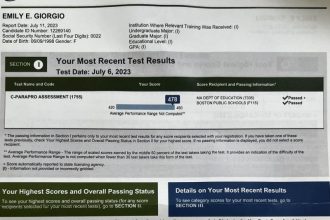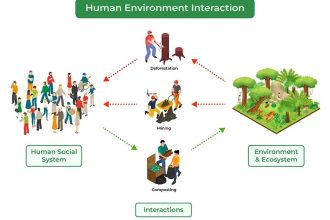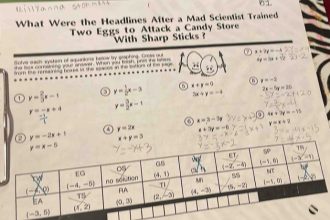The inequality sign that represents ‘no more than’ is the ≤ sign. Understanding this symbol is crucial in mathematics and various fields. It signifies that the value on the left side is less than or equal to the value on the right side. Mastering the concept of ≤ can greatly enhance your problem-solving skills and analytical thinking. Let’s delve deeper into the significance and applications of what inequality sign is no more than.
What Inequality Sign is No More Than
Mathematics involves a lot of different symbols and signs to represent relationships between numbers. One important concept in math is comparing numbers using inequality signs. Today, we are going to dive into the world of inequalities and focus on one specific sign: the less than or equal to sign, which looks like ≤. Let’s explore what this sign means and how it is used in various mathematical situations.
Understanding Inequalities
Before we delve into the specifics of the less than or equal to sign, let’s first understand what inequalities are in mathematics. Inequalities are expressions that compare two values and show their relationship. They are used to indicate which number is greater than, less than, or equal to another number.
There are four main inequality signs in mathematics:
- Greater Than: >
- Less Than: <
- Greater Than or Equal To: ≥
- Less Than or Equal To: ≤
Each of these signs plays a crucial role in mathematics and helps us make sense of numerical relationships.
The Less Than or Equal To Sign (≤)
Now, let’s focus on the inequality sign that combines the concepts of less than and equal to: ≤. This sign represents a relationship where one number is either less than or equal to another number. In simple terms, it shows that the first number is no more than the second number.
For example, if we have the inequality 4 ≤ 5, it means that 4 is less than or equal to 5. This is because 4 is not greater than 5; it is either equal to 5 or less than 5. The less than or equal to sign helps us express this relationship clearly.
Real-Life Examples
Now, let’s look at some real-life examples where the less than or equal to sign can be used to describe relationships:
1. Age Comparison
Consider a scenario where you are comparing the ages of two siblings. If the older sibling is 12 years old and the younger sibling is 10 years old, you can use the inequality 10 ≤ 12 to show that the younger sibling’s age is no more than the older sibling’s age.
2. Temperature Range
When discussing temperature ranges, the less than or equal to sign can be handy. For instance, if the weather forecast states that the temperature will not exceed 80°F, you can write this as T ≤ 80, indicating that the temperature will be 80 degrees Fahrenheit or less.
Using the Less Than or Equal To Sign in Equations
In mathematics, the less than or equal to sign is often used in equations to set limits or boundaries. When solving equations, this sign helps us define the range of possible solutions.
For instance, if you are working on a problem that involves finding all numbers less than or equal to 10, you can use the inequality x ≤ 10 to represent that range of numbers. This sign guides you to consider values up to 10 without exceeding that limit.
Practicing with Inequalities
Now that we understand the concept of the less than or equal to sign, it’s time to practice using it in various scenarios. Here are some inequality problems for you to solve:
Problem 1
Compare the following pairs of numbers using the less than or equal to sign:
a) 7 and 9
b) 15 and 15
c) 20 and 18
Problem 2
Create your own scenario where you can use the less than or equal to sign to compare two values. Write down the inequality and explain what it represents.
By practicing with these problems, you will become more confident in using the less than or equal to sign and understanding its implications in mathematical contexts.
The less than or equal to sign (≤) is a powerful tool in mathematics that helps us compare numbers and set boundaries in equations. By grasping the concept of this inequality sign, you can enhance your problem-solving skills and mathematical understanding. Remember, when you see the ≤ sign, think of it as showing that one number is no more than another, either being equal to it or less than it. Keep practicing with inequalities, and you’ll master this important mathematical concept in no time!
🤯 No More Confusion!!! 🙌 Less Than and Greater Than Signs EXPLAINED!
Frequently Asked Questions
What does the inequality sign “<=" mean?
The inequality sign “<=" means "less than or equal to." It denotes that the value on the left side is either less than or equal to the value on the right side.
When do we use the inequality sign “<=" in comparisons?
We use the inequality sign “<=" when we want to indicate that one value is either less than or equal to another value. This sign helps in expressing relationships between quantities that are not exactly equal but can be equal or less than the other.
How is the inequality sign “<=" different from the equal sign "="?
The inequality sign “<=" indicates that the value on the left side is less than or equal to the value on the right side, while the equal sign "=" denotes that the values on both sides are exactly equal. The "<=" sign includes the possibility of the two values being equal, unlike the equal sign.
Final Thoughts
In conclusion, it is essential to understand that the less than or equal to inequality sign indicates that a value can be equal to or less than another value. This sign highlights the equality between two values, opening up possibilities for inclusivity and fairness. By recognizing what the inequality sign is no more than, we can promote equity and justice in various aspects of life. Embracing this concept can lead to a more balanced and harmonious society.






